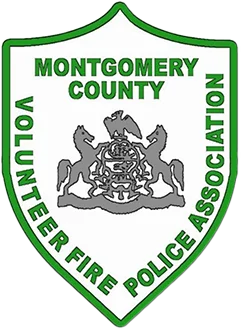Brief History of PA Fire Police and MCVFPA
The first fire police officers in the state of Pennsylvania were appointed in Meadville, Crawford County in 1896. They had no authority other than that which could be provided by their fire company and the municipality in which they served. Legal recognition, Title 35, Act 74 of June, 1941, was passed to grant Special Fire Police officers necessary police power to provide such protection. Fire Police could only act in emergency situations only when their fire department was involved. In 1949, Act 388 was passed and Fire Police were given power to act without fire company involvement, providing a request to do so was made by a municipality. In 1896, Meadville, Crawford County, Pennsylvania, witnessed the establishment of the state's inaugural fire police officers. Their jurisdiction was initially confined to the authority bestowed upon them by their respective fire companies and the municipalities they served. Subsequent legal recognition was formalized through Title 35, Act 74, enacted in June 1941, which granted Special Fire Police officers the requisite police powers for protective duties. Initially, these powers were applicable solely during emergency scenarios involving their fire department. The Montgomery County Volunteer Fire Police Association was organized July 9th, 1927 and became officially chartered in May of 1933.
Officers
- President - Marie Blusiewicz
- 1st Vice President- Rick Dinapoli
- 2nd Vice President- Tom Moravec
- Immediate Past President - Clinton Wakefield
- Recording Secretary - Amber Blusiewicz
- Asst Recording Secretary - Open
- Membership Secretary - Olivia Moyer
- Assistant Membership Secretary - Jim McGlinchey
- Treasurer - Barbara Spilove
- Assistant Treasurer - Dave Cressman
- Chaplain - Jean Sullivan
- Asst Chaplain - George Bailey
- Trustee - Sharon Brunner
- Trustee - Jerry Wagner
- Trustee - Brian Rath
- MC Firemen’s Assoc Delegate - Open
- PA FPA Delegate - Open
- Alt PA FPA Delegate - Open
- Member-at-Large (Appt by President) - Open
- Fire Police Commissioner - Carroll Davis Jr
- Fire Police Commissioner Staff - George Bailey (FP999-1)
- Fire Police Commissioner Staff - Tom Moravec (FP999-2)
- Fire Police Commissioner Staff - Jared Landis (FP999-3)
- Fire Police Commissioner Staff - Jerry Wagner (FP999-4)
Fire Police Code of Ethics
As a fire police officer my fundamental duty is to serve mankind as I protect my brother and sister firefighters in their efforts to save life and property. To this end:
- I will be constantly mindful of the welfare and rights of others.
- I will be impartial in my treatment of all persons coming under my jurisdiction.
- I will be firm, but also courteous and helpful to all and my feelings shall not influence my decisions.
- I will never be vulgar or profane in my speech or actions when on duty.
- I will cooperate fully with my superiors, fellow officers,and all law enforcement agencies to provide greater protection to the public and the fire department I serve.
- I will strive to become more proficient in my duties as a fire police officer by diligent study and training at every opportunity.
- I will regard my badge of a fire police officer as a symbol of trust from my state, community and my fire department and act accordingly.
- I will constantly strive to obtain these objectives as I serve as a fire police officer.
Roles & Responsibilities of Fire Police
Pennsylvania Fire Police officers are sworn volunteers with limited police powers, playing a crucial role in supporting emergency services. Here are 10 duties they might be expected to perform:
- Traffic Control at Emergency Scenes: Directing vehicular and pedestrian traffic around fires, accidents, and other incidents to ensure the safety of first responders and the public, and to allow emergency vehicles clear access.
- Scene Security and Crowd Control: Establishing and maintaining a secure perimeter around emergency scenes, preventing unauthorized access, and managing curious onlookers to ensure smooth operations.
- Protection of First Responders: Safeguarding firefighters, EMS personnel, and police officers working on roadways or in hazardous environments by controlling traffic flow and maintaining a safe zone.
- Road Closures and Detours: Implementing temporary road closures and setting up detours due to hazards like fires, vehicle accidents, downed wires, or flooding, guiding motorists along alternative routes.
- Assisting with Apparatus Staging: Directing incoming emergency vehicles (fire trucks, ambulances, police cars) to designated staging areas to maintain order and efficiency at large incidents.
- Protecting Property and Equipment: Preventing theft or damage to fire department equipment, personal property at emergency scenes, and ensuring the integrity of a scene for investigations.
- Maintaining Order at Community Events: Providing traffic and crowd control for non-emergency events such as parades, fairs, and other public gatherings to ensure safety and smooth flow.
- Assisting Law Enforcement: Cooperating with local and state police by assisting with traffic control, securing crime scenes, or helping to move tow trucks into position at accident scenes.
- Securing Landing Zones for Helicopters: Establishing and maintaining a safe perimeter for medical helicopters (MedEvac) to land and depart, protecting people from rotor wash and debris.
- Information Dissemination: Providing information to the public regarding detours, scene operations, or general safety, often being the "face" of the fire department to concerned citizens.
